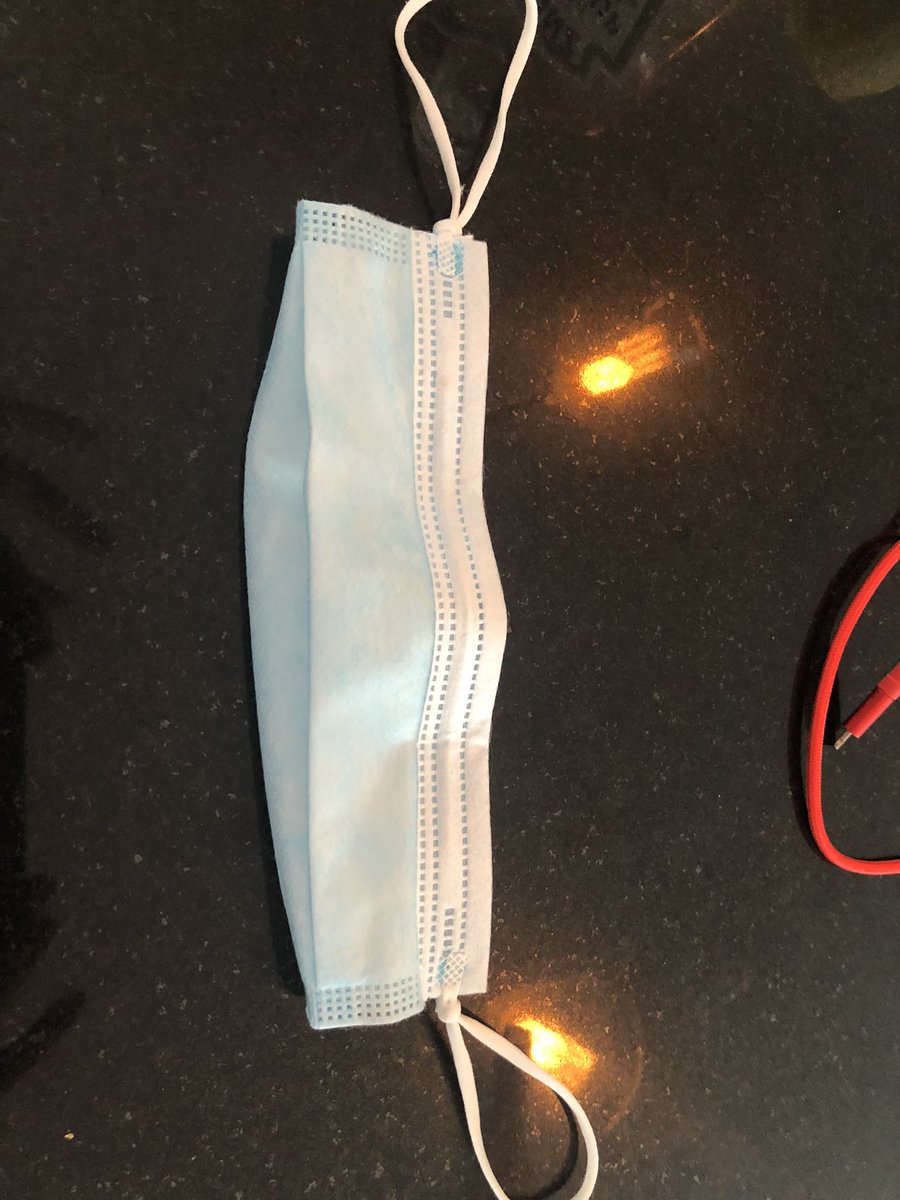
#BetterMasks #FitFiltrationFunction
@masknerd’s google docs excel sheet tabulating all his mask testing results is a goldmine of information!
I highlighted some of his data in the pictured table to further explore the validity of the “well-fitting medical mask” narrative
1/
@masknerd’s google docs excel sheet tabulating all his mask testing results is a goldmine of information!
I highlighted some of his data in the pictured table to further explore the validity of the “well-fitting medical mask” narrative
1/
https://twitter.com/masknerd/status/1476668499649044484

A few ASTM level 3 surgical masks were tested. Worn without modification, they had a filtration efficiency of 35-78% (via particle counter).
(Side note- don’t twist the ear loops- it makes the fit worse)
Is > 20% leak well-fitting? Not in my books.
2/
(Side note- don’t twist the ear loops- it makes the fit worse)
Is > 20% leak well-fitting? Not in my books.
2/

With a mask brace to improve seal, the surgical masks performed better: > 92% filtration efficiency, not quite well-sealed N95 quality
To pass a formal quantitative fit test for respirators (ie N95s), one must achieve at least 99% filtration efficiency (fit factor of 100).
3/
To pass a formal quantitative fit test for respirators (ie N95s), one must achieve at least 99% filtration efficiency (fit factor of 100).
3/
Note the increase in pressure drop when the surgical masks were sealed with the brace.
Surgical masks are perceived as more breathable because we breath around them (>20% leak).
Surgical masks were designed to block fluid, NOT to have optimal breathability and filtration
4/
Surgical masks are perceived as more breathable because we breath around them (>20% leak).
Surgical masks were designed to block fluid, NOT to have optimal breathability and filtration
4/
Moving on to ear-loop style respirators (KN95, KF94, 95 PFE @CanadamasQ)
These are shaped for a semi-universal fit and have superb filters. The ear loop design is more convenient, but may not fit tight to offer a perfect seal.
5/
These are shaped for a semi-universal fit and have superb filters. The ear loop design is more convenient, but may not fit tight to offer a perfect seal.
5/

Ear-savers or shortening the ear-loops (with knots or silicone beads) will get you closer to a perfect fit
While only a few ear-loop models would have passed a quantitative fit test without modification, all of these models achieved > 95% filtration efficiency
Clearly far superior to the so-called “well-fitting medical masks”
6/
Clearly far superior to the so-called “well-fitting medical masks”
6/
Finally, I highlighted several NIOSH N95/FFP3 respirators (headbands). I have worn all of these models. I find the traditional cup-style the most uncomfortable. The others are very comfortable and breathable.
@masknerd would pass formal fit tests on all of them
7/
@masknerd would pass formal fit tests on all of them
7/

The common PH/IPAC narrative that “a non-fit tested respirator is useless at best and dangerous at worst” is clearly false.
8/
8/
Concerned about high velocity fluid spray?
1) add a faceshield
2) choose a “surgical respirator”, which meets ASTM 3 level fluid resistance - this includes the 3M Aura and many of the Canadian made respirators, including @vitacoreinc CN99 and Eclipse Arc
9/
1) add a faceshield
2) choose a “surgical respirator”, which meets ASTM 3 level fluid resistance - this includes the 3M Aura and many of the Canadian made respirators, including @vitacoreinc CN99 and Eclipse Arc
9/
Of note, respirators (while not all formally tested) are fluid resistant by the nature of their filter material and most will meet ASTM 1 or 2 level fluid resistance
10/
10/
• • •
Missing some Tweet in this thread? You can try to
force a refresh














